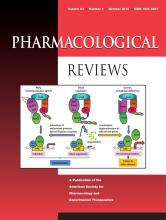Abstract
Brain cells are continuously exposed to corticosteroid hormones, although the levels vary (e.g., after stress). Corticosteroids alter neural activity via two receptor types, mineralocorticoid (MR) and glucocorticoid receptors (GR). These receptors regulate gene transcription but also, as we now know, act nongenomically. Via nongenomic pathways, MRs enhance and GRs suppress neural activity. In the hypothalamus, inhibitory GR effects contribute to negative feedback regulation of the stress axis. Nongenomic MR actions are also important extrahypothalamically and help organisms to immediately select an appropriate response strategy. Via genomic mechanisms, corticosteroid actions in the basolateral amygdala and ventral-most part of the cornu ammonis 1 hippocampal area are generally excitatory, providing an extended window for encoding of emotional aspects of a stressful event. GRs in hippocampal and prefrontal pyramidal cells increase surface expression of α-amino-3-hydroxy-5-methyl-4-isoxazolepropionic acid receptors and strengthen glutamatergic signaling through pathways partly overlapping with those involved in long-term potentiation. This raises the threshold for subsequent induction of synaptic potentiation and promotes long-term depression. Synapses activated during stress are thus presumably strengthened but protected against excitatory inputs reaching the cells later. This restores higher cognitive control and promotes, for example, consolidation of stress-related contextual information. When an organism experiences stress early in life or repeatedly in adulthood, the ability to induce synaptic potentiation is strongly reduced and the likelihood to induce depression enhanced, even under rest. Treatment with antiglucocorticoids can ameliorate cellular effects after chronic stress and thus provide an interesting lead for treatment of stress-related disorders.
Footnotes
↵
 The online version of this article (available at http://pharmrev.aspetjournals.org) contains supplemental material.
The online version of this article (available at http://pharmrev.aspetjournals.org) contains supplemental material.This article is available online at http://pharmrev.aspetjournals.org.
- © 2012 by The American Society for Pharmacology and Experimental Therapeutics
PharmRev articles become freely available 12 months after publication, and remain freely available for 5 years.Non-open access articles that fall outside this five year window are available only to institutional subscribers and current ASPET members, or through the article purchase feature at the bottom of the page.
|







